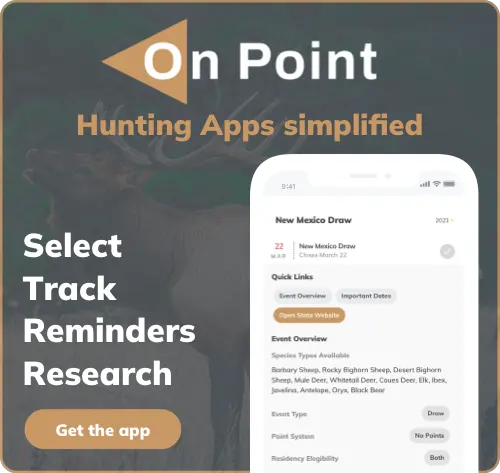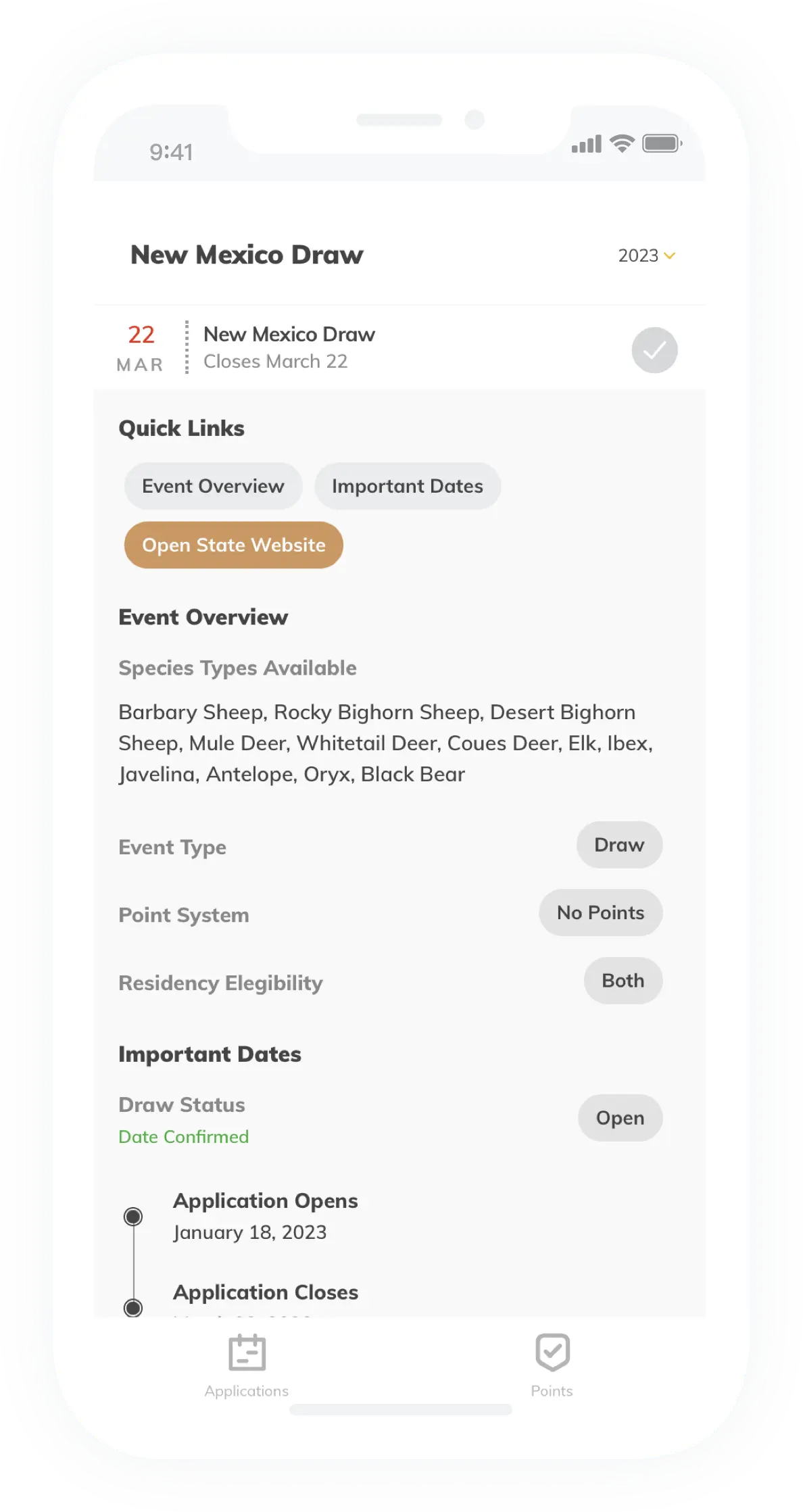Nevada Big Game Draw 2025
Overview of the Nevada Big Game Draw
The Nevada Big Game Draw is the primary opportunity to obtain nearly all big game hunting tags in the state, with the exception of Mountain Lion, which are available over the counter, and non-resident guided Deer tags, which are available through a separate draw.
All primary tags are made available through the main draw. A second draw occurs after the main draw and includes any tag that is remaining or returned without an eligible alternate. Any tags left after the secondary draw are then made available in a first-come, first-served draw. In the secondary draw and leftover sale, tags are offered to any residency regardless of the residency originally assigned to the tag for the main draw.
Key dates – When is the Nevada big game draw deadline?
The deadline for the 2025 Nevada big game draw is May 7th, 2025 at 11PM PST.
Nevada Hunting Tag Quotas
Due to the generally low populations of game in the state, Nevada sets species by species quotas annually. Nonresidents tags are usually around 10% of the total tag allocation, but vary depending on final approved numbers.
Draw Process for Nevada Hunting Tags
Nevada Bonus Point System
Applicants are awarded bonus points for each year they apply for a hunting tag and are not successful. Points are specific to a species, regardless of the weapon or season type applied for. You can read more about the point system, and each type of point available in our Nevada summary.
Nevada Draw Process
The quantity of entries you receive in the draw for each species is based on the number current bonus points, squared, plus a single entry for your current application. Adding the bonus points squared plus the current entry determines the total number of entries for each eligible species. Each entry is then randomly assigned a number, amongst all other entries from other hunters for the species. The lowest number assigned to an application for each species is then used in the draw.
The applications are grouped based on the species and ranked from lowest draw to highest draw number. Tags are assigned to the first lowest draw number followed by the second, third, and so forth until all quotas are filled and each application is evaluated.
The following groups are used to allocate Nevada hunting tags:
- Silver State
- Partnership in Wildlife
- Junior Mule Deer Antlered/Antlerless
- Assigned simultaneously in no particular order: Rocky Mountain Bighorn Sheep Ram, California Bighorn Sheep Ram, Nelson (Desert) Bighorn Sheep Ram, Elk Antlered, Elk Depredation Antlered, Antelope Horns Longer than Ears, Mule Deer Antlered, Mountain Goat, Black Bear.
- Assigned simultaneously in no particular order: California Bighorn Sheep Ewe, Nelson (Desert) Bighorn Sheep Ewe, Elk Antlerless, Elk Depredation Antlerless, Antelope Horns Shorter than Ears, Mule Deer Antlerless
- Spike Elk, Management Bighorn Ram
Species within the same group do not affect the ability to receive a tag for a different species within the same group, with the exception of the subspecies of Bighorn Sheep. However, an applicant is only allowed to draw one tag per species. Once an applicant is awarded the first tag of a species, all other applications for that species, regardless of type or sex, become ineligible. For example, if you draw a Silver State Mule Deer Antlered tag, any application for a Mule Deer Antlered or Antlerless tag would then become ineligible.
For more information on hunting tags in Nevada, visit our Nevada summary. To apply for hunting tags, visit the Nevada Department of Wildlife.
Draw Requirements – What do I need to apply for Nevada hunting tags and points?
A valid hunting license and predator control fee are required to apply for Nevada draws, including for purchasing points only. An application fee is applied per species applied for, including for points purchases.
Nevada General License and Fees
| Item | Resident Price | Non-Resident Price |
|---|---|---|
| Hunting and Fishing Combination License | $75.00 | $155.00 |
| Application Fee or Point Purchase (per species) | $10.00 | $10.00 |
| Nonrefundable Predator Fee (per application) | $3.00 | $3.00 |
| Nonrefundable Elk Damage Fee (elk only) | $5.00 | $5.00 |
Nevada Hunting Tag Prices
| Item | Resident Price | Non-Resident Price |
|---|---|---|
| Mule Deer Tag | $30.00 | $240.00 |
| Restricted Nonresident Guided Deer Tag | $300.00 | |
| Landowner Damage Compensation Tag-Mule Deer & Antelope | $50.00 | $50.00 |
| Bighorn Sheep Tag | $120.00 | $1,200.00 |
| Antelope Tag | $60.00 | $300.00 |
| Elk Tag | $120.00 | $1,200.00 |
| Elk Incentive Tag | $120.00 | $1,200.00 |
| Rocky Mountain Goat Tag | $120.00 | $1,200.00 |
| Mountain Lion Tag | $29.00 | $104.00 |
| Black Bear Tag | $100.00 | $300.00 |
Quick Strategy and Recommendations
Given the somewhat long odds for many species in Nevada, it can be an expensive proposition to build points in the state. However, after the hunting license, the incremental cost of securing points is not high, so we recommend an “all or nothing” approach to point building. Additionally, given that Nevada doesn’t use a preference system and the cost of a point is the same as the cost of applying, we recommend applying in any year you are seeking to build points, unless you know you will be unable to hunt a drawn tag.



